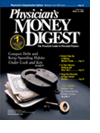Medicare Cuts Still Loom
Although the new Medicare reform lawpushed the day of reckoning farther into thefuture, physicians still face a sharp cut inMedicare reimbursements fees come 2006.The new law sets a minimum 1.5% increase in theamounts Medicare pays to doctors for both 2004 and2005, but leaves the payment formula, which is whatcaused most of the problem in the first place, essentiallyuntouched. Basically, that means that unless the formulais changed or scrapped altogether, the increases over thenext 2 years will be factored into the fee calculations for2006, resulting in a sharp drop in reimbursement levels.
The complex formula involves estimates of healthcare spending combined with the nation's gross domesticproduct (GDP). The formula resulted in a 5.4% cutin fees in 2002, while emergency legislation averted a4.3% cut in 2003 and another 4.4% cut this year.Physician groups, including the AMA, say that the recurringneed to tweak the formula proves that it's unworkableand needs an overhaul. According to AMAPresident Donald Palmisano, MD, the tie-in to the country'sGDP fails to take into account the aging Medicarepopulation, technological innovations, or changes in thepractice of medicine. When the economy slows down,Dr. Palmisano says, it doesn't mean that the medicalneeds of Medicare patients are any less.
Some studies have shown that while physician participationin Medicare is still high, problems withphysician access for Medicare enrollees are starting tocrop up. The Agency for HealthCare Research andQuality found that the 5.7% of Medicare beneficiarieswith fee-for-service coverage found it hard to obtain anappointment with a specialist in 2002, up from 5.2%the previous year. In another study done in the fall oflast year, the Medicare Payment Advisory Commissionfound that 2% of all Medicare beneficiaries could notfind a new doctor to treat them.
